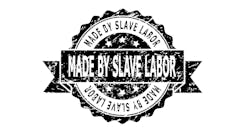While Americans are proud of the quality of our products, many have a far different perception of manufacturing jobs. They see manufacturing as“dead,”lacking opportunities or challenges, and even as dirty or “undesirable”work. They’re blind to the reality that today’s manufacturing jobs blend design with technology and robotics, and many pay extremely well.
When I was growing up, it seemed like everyone believed that U.S. manufacturers made the greatest products in the world. From our home appliances to our cars, we all chose “Made in America” products for their quality and their value. No other country put as much pride, innovation and workmanship into their design, and looking elsewhere wasn’t even an option. U.S. manufacturing was a flagship of our economy, and nothing could knock it from its pedestal—or so we thought.
Of course, the sentiment has changed since thenas the economy has grown more global, and countries like China compete on price. But the pendulum is swinging back—or should I say forward—as Made in America quality once again becomes a status symbol for consumers and a competitive advantage for manufacturers here at home.
My company recently conducted its annual Industry Market Barometer survey of U.S. manufacturers on the growth and outlook of the industrial sector as well as strategies companies are employingto get there. The findings confirm this transformation. In the end, we heard from more than 1,600 manufacturers, and nearly eight out of 10 of them indicated that they expect growth this year.
By standing behind their Made in America quality,these manufacturers are taking back business from the Chinese. They’re borrowing apage fromthe playbook of The Rodon Group of Hatfield, Penn., an injection molder of small plastic parts. A few years ago, when they sensed Chinese competitors gaining ground, Rodon launched an online“Cheaper than China” campaign to focus on their American manufacturing values. Within two years, their sales jumped more than 30%. These companies never lost sight of the glory of American manufacturing, and now the world is coming to share their point of view.
Our research shows that U.S. manufacturers are entering new markets, expanding into new regions, and increasing their exports. With their gears fully in motion, American companies are looking to hire more workers to meet new market demand.
And that’s where this engine of economic growth suddenly starts to sputter. Our research supports what we are allseeing every day: despite an unemployment rate of close to 8%, manufacturing jobs are going unfilled.
Nearly half of our respondents want to bring in line workers,skilled trade workers, and engineers. But the people who are qualifiedfor these jobs are eitheruntrained or uninterested.
This is a symptomof a larger problem.Despite the resurging interest in U.S. products, American manufacturing is in need of a brand makeover.While Americans are proud ofthe quality of our products, many have a far different perception of manufacturing jobs. They see manufacturing as “dead,” lacking opportunitiesorchallenges,and even as dirty or “undesirable” work. They’re blind to the reality that today’s manufacturing jobs blend design with technology and robotics, and many pay extremely well.
With shop classes disappearing and families and educators pushing students of all abilities toward a bachelor’s degree, however, younger generations have no opportunityto be exposed to the rewards of a manufacturing career. Respondents to our survey are vocal about this issue. They stress the importance of STEM (science, technology, engineering andmathematics)curricula,alongwith support for technical and vocational schools. One of them notes that we must “get the message out that manufacturing isn’t dead inthe U.S.; it has just gone high-tech.”
It’s gratifying to hear from individualslike Tracy Tenpenny,vice president of sales and marketing with Tailored Label Products(TLP)in Menomonee Falls, Wis. Tracy advocated for TLP’s sponsorship of a program called Second Chance Partners, which helps high school students gain manufacturing skills. Many of these students come from challenging backgrounds, and are at risk ofnot finishing high school. Through Second Chance, they continue working toward their diplomas while beginning to learn a trade. TLP actually installed a classroom at their plant so that these students can continue their academics there for two hours a day. The rest of the time, they are working at TLP and other area manufacturers. TLP is not only introducing them to a new profession; the company has hired two of these students.
Rodon, too, has innovated to develop a solution. The company formed a consortium of about 50 local manufacturers. Together, these firms have approached two-year colleges and trade schools in their area, asking them to send graduates their way. Not only does this help Rodon and neighboring companies to grow; it’s a competitive advantage for the schools, which are able to demonstrate a return on their training. In addition, consortium members are presenting at middle schools and high schools to ignite students’ interest in manufacturing.
These are just two of many examples of manufacturers who are taking the initiativeto help their industry make a come back. Families, educators, associations, government and businesses are all stepping up. We were gratified to endorse National Manufacturing Day, another wonderful example, with manufacturers opening their doors tostudents and their families, and associations offering insights and resources to aspiring and current manufacturers alike.
U.S. manufacturers, after all, have a passion for their industry. Eight out of 10 of those we surveyed would choose their industries allover again, and they want to share their enthusiasm with the next generation. Great things are possible when bright, ambitious young people have the opportunity to apply skills and knowledge to real-world applications and contribute meaningfully to the growth of a company, a sector—and ultimately the economic vitality of our nation. To engage this new generation, we must restore—and elevate—the U.S. manufacturing brand.
Eileen Markowitz is president of ThomasIndustrial Network, an information and technologycompanythatconnectsmanufacturing and industrial buyers and sellers. You may contact her at [email protected].


